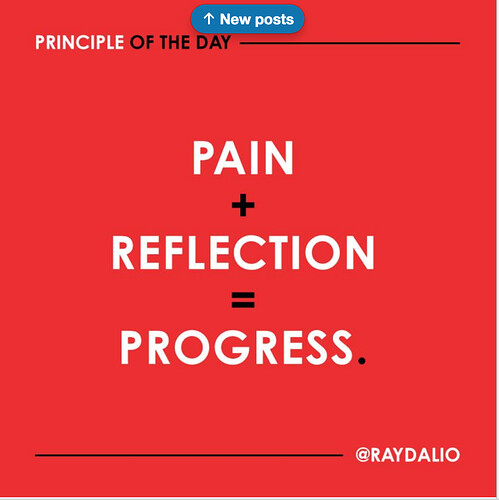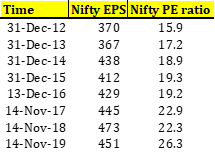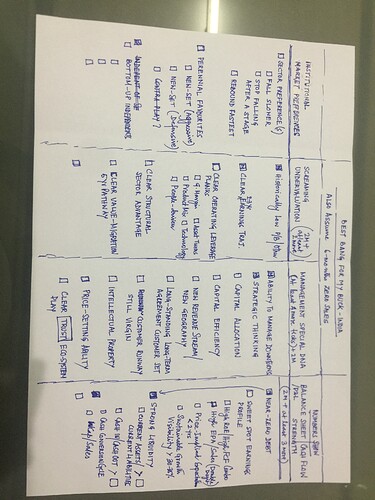Grateful for a quick chat with Mr D this morning. Our consistent efforts seem to be paying off. He is slowly responding to my pleas about VP Audience, desperately in need of guidance form Veteran Investors.
Q: Mr D, We are all bachhas in this completely new situation. Most of us were caught unawares. What would be your advise to VP Members?
A: Baccha toh abhi hum sab hai. This situation has no parallels from my investing journey. We must acknowledge WE DON’T KNOW.
Q: Some of my Technicals-Aware experienced friends at VP, are calling out for a massive correction in the Offing, and not shy of providing levels as low as 6500 for the Nifty in steps. I have maintained the argument that Levels are meaningless in this situation - that it will correct badly (swaggers-off, most senior Members are belatedly coming round to that view), perhaps much more from here, should be a good enough decision-input?
A: Markets - What level it could fall to, when should I start buying etc. type of worries, are best left for those who deal with such things! Apne liye toh, we don’t know is the correct response. Current lockdown by all indications (we are hearing) may be there till end Apr/End May. Now if someone starts buying TODAY with that in view - is a terribly optimistic view and not the correct response (though he may well be proved right). At the moment we can hope to be back to normal by Jun-July timeframes, when it will be summer months for the Northern Hemisphere. [One could follow Bill Gates TED Talk] | How we must respond to Coronavirus Pandemic]. That’s an assumption that can perhaps be made on how things stand today.
If we see where Markets are today NIFTY PE ~20, P/B ~2.5x, Div Yield 1.76 levels and compare it to 2008 Market lows, probably only on P/B we are close, have lot of ground to give up to reach P/E levels of 11-12 (when statistically it has been seen to be typical buy levels, post secular crash), even Div Yield was around 2.5x perhaps.
While we might think that Market has already fallen a lot, Effect of Lockdown is not yet priced in. So we could be far from the bottom, yes; that’s a good enough conservative conclusion. Responses should be similarly conservative, you don’t get any extra points for being aggressive in such a scenario.
We watch carefully, and keep tweaking understanding/projections, as clarity emerges progressively.
Q: With that out of the way, supposing one has created adequate ammunition, how should one prepare to take advantage of better & better opportunities?
A: So let’s say there will be a general secular downtrend right, each stock will find its own bottom, gradually - dependent on its sector-specific/ macro issues / and its own micro issues, and Management responses to the same, getting clearer with time.
So we should forget about market levels. What we CAN do is relook closely at business we know well. Make adjustments to projections on both Topline & Bottomline. Basically adjust for Growth rates, and Interest rates. Supposing, we were factoring in a 20% growth rate earlier, surely at least for a year we have to factor in lower growth and adjust progressively, as clarity emerges.
Q: So what would be conservative projections in your book? Factoring in only 6 months Sales, at a lower rate or say taking only a Qtr of earning into reckoning - does that take care of most problems?
A: One can do that. But a better way would be to go sector by sector, and company by company, that we know well and understand and try to run a simulation in our minds on sector specific issues that are likely to emerge, that there will be probably some Re-starting costs associated, that some sectors are likely to be more effected, and some less. Basically, go line item by line item on BS, On Costs, to re-assess better.
Q: Can you help us with some examples?
A: It’s obvious that Pharma and those businesses that fall under ambit of Essential Services are likely least impacted, right.
We could think about businesses that are dependent more on Government Spending and sport large Order Books. Those Order Books will now look like Fiction, isn’t it? Where is the Money? Their receivables will go up on existing orders, and new orders will get deferred. One might find some PSUs with huge 10000Cr+ Defence Orderbooks good businesses on most fronts, protected margins and available cheap, but effect of this?
We could think about Businesses that are dependent on Migrant Labour. It may be a long time before Migrant Labour finds it safe and remunerative to return? So Infra, Construction, RE - we could think about the severity of effect on their businesses. Some of these RE, and Infra plays may look cheap now - but thats based on last years earnings. Next year earnings would look very different isn’t it? So there is scope for much further fall there?
Q: Thank You, that was really useful and illuminating. It’s getting me excited that there can be a method-to-this-madness too.
A: You guys are good at this. I am sure you will take things forward from here. Look forward to learnings back from VP, and use in my frameworks.
Q: One last question before we let you go for now. There is this school of thought that some businesses are well positioned to take advantage of the health crisis, like say a Poly Medicure, or Hospitals? Any comments?
A: Yes. Some of these businesses are robust. And well placed today. They haven’t corrected much.
But you guys are focused on generating much bigger Alpha. The real opportunity is probably not in the discovered names, they are in those small businesses with business models which will face a year of hardships, but post that there is enough robustness and scale-up opportunities with good managements at helm.
I would say typical VP-style will be in play once again, once the Lockdown Lift-up settles down. That’s the time you guys will probably be again out on the field, meeting folks in different sectors, gathering scuttlebutt, figuring out the next set of winners!







